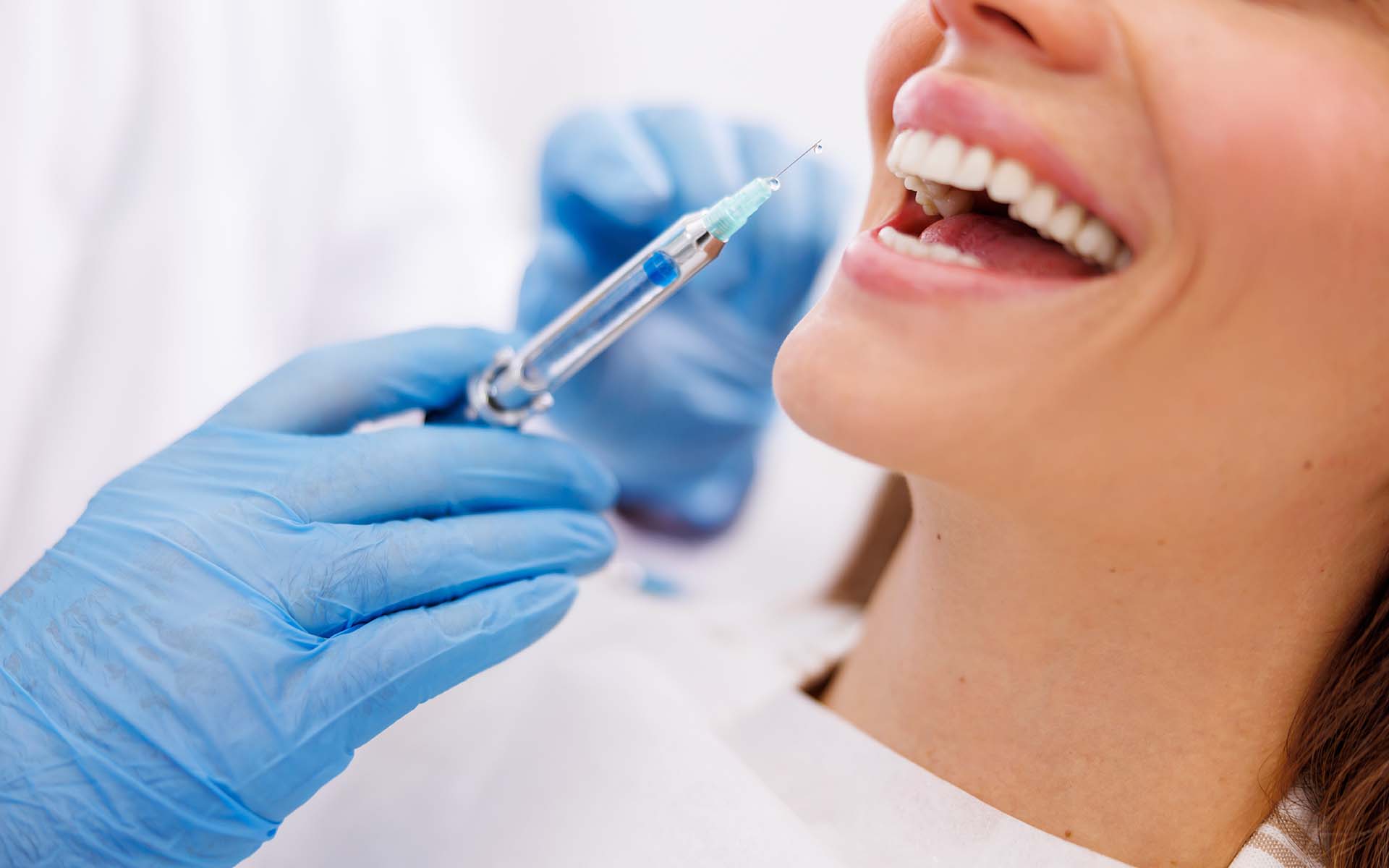
Dental Applications

Botox is based on the principle of blocking the nerves that interact with the muscles for a while. Botox, which is produced under sterile laboratory conditions from a special bacterium called Clostridium Botulinum, can be applied in aesthetic applications, wrinkle treatments and muscle systems. With the developing medical technology, its usage area is expanding and it does not have any side effects. It is also used in the treatment of various problems in dentistry. The most common and widely used conditions are bruxism, that is, the treatment of patients with clenching and disproportionate gingival visibility. Dentists' working area with botox is the mouth and jaw, as well as other tissues associated with them.
Botox Application in Clenching Treatment
Bruxism, or clenching of the teeth, can occur consciously or unconsciously while asleep or awake. The biggest source of clenching, which can be caused by many different factors, is stress. Apart from stress, anxiety, depression, vitamin and mineral deficiencies, some medications, improper closing disorders in the teeth can cause clenching. Various symptoms can occur as a result of clenching. These;
- Ear and headaches
- Jaw and toothaches
- Cracks in the teeth, wear on the tooth enamel and sensitivity due to this
- Difficulties in mouth opening and limited mouth movements.
People who have clenching problems should contact their dentist and plan an appropriate treatment before irreversible problems occur. If the teeth clenching problems for which plaque applications are recommended initially cannot be obtained, treatment with botox will be the most appropriate option. In this method, the neurotransmission in the muscle is prevented by applying Botox to the muscles that close the jaw. After botox is applied to the masseter muscle, which unconsciously contracts excessively and therefore grows and hardens, the patient relaxes and the chin contour takes a suitable shape. Muscle tissue is not damaged as a result of the procedure. Only the neural transmission is blocked for a while. The purpose of applying botox for clenching is to eliminate the damages that may occur in the joint and jaw caused by clenching. Botox method for teeth grinding should be applied as long as dentists deem it appropriate. After Botox, the problem usually disappears and there is no need for reapplication at the end of 6 months. However, in cases where the tightening problem persists, it may be reapplied according to the examinations to be made by the dentist.
Gummy Smile Botox Application
The excessive appearance of the gums when talking or laughing is called Gummy Smile. In an ideal smile, the gingiva can be seen about 2 mm, while in the case of Gummy Smile, up to 10 mm of gingiva can be seen. Dental effects, which are in the foreground while laughing or talking, can increase people's aesthetic anxiety and cause self-confidence problems. The causes of Gummy Smile are usually;
- Thinner-than-normal upper lip
- Tooth height outside the standards
- Inflammation due to gum diseases
- Some hypertensive drugs used by hypertension patients cause gingival enlargement
- Disproportionate bone growth in the upper jaw
- Due to the hypermobile structure of the upper lip, it goes too high when smiling
Gummy smile is a treatable condition. Generally, it is aimed to reduce muscle retraction by applying gingival botox. Thanks to the application made to the sides of the nostrils, the upper lip muscles will not be able to lift the lip much while the person is laughing or talking. Before Botox is applied, a cream that creates a local anesthetic effect is applied. The application is made after the cream starts to show its effect. Thanks to the local anesthetic cream, pain and suffering are felt at the minimum level. Botox application is a temporary solution to prevent the gums from appearing and is effective for about six months. After the fourth month, it gradually loses its effect. Gummy smile botox can be repeated depending on the person's request.